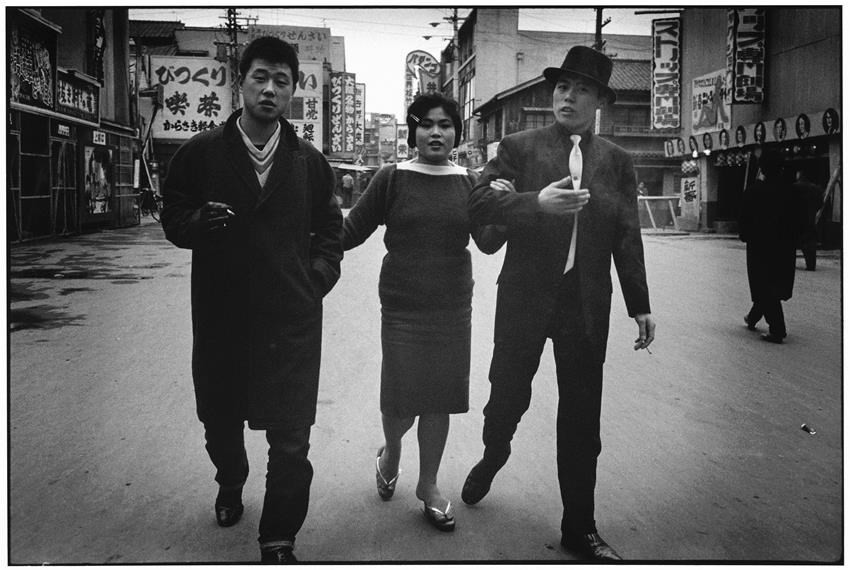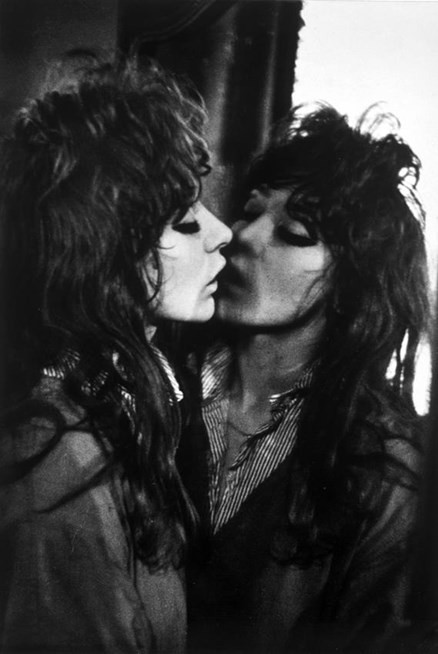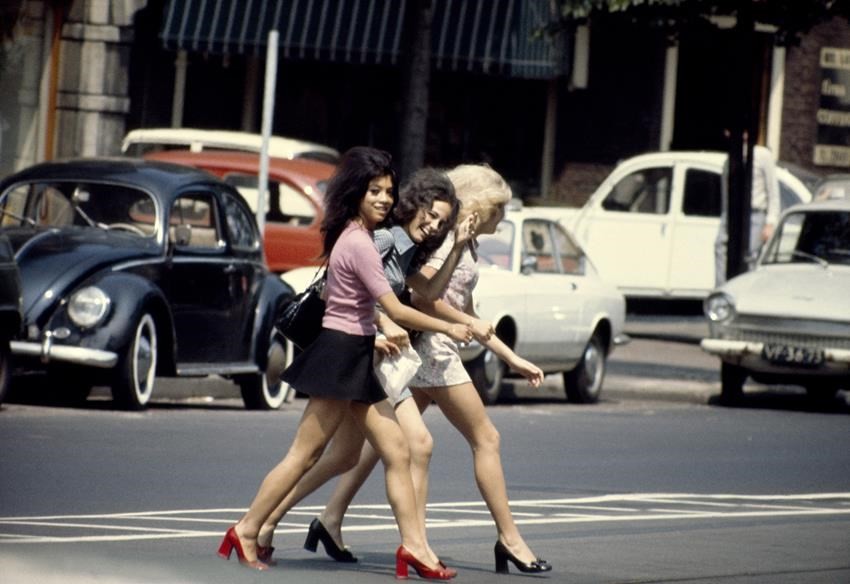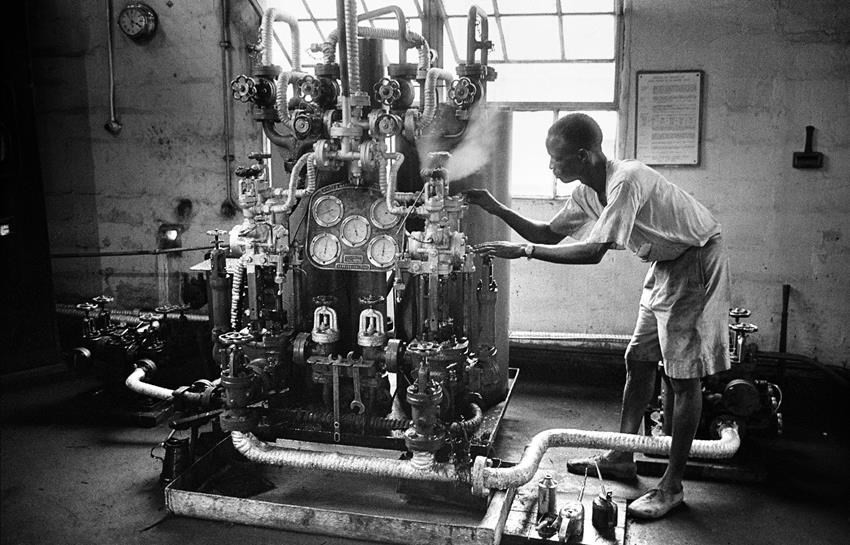Ed Van Der Elsken
Camera in Love
04 Feb - 21 May 2017

Nozems, Kamagasaki, Osaka, 1960
© Ed van der Elsken, Nederlands Fotomuseum, courtesy Annet Gelink Gallery
© Ed van der Elsken, Nederlands Fotomuseum, courtesy Annet Gelink Gallery

Ed van der Elsken
Vali Myers in Front of Her Mirror, Paris, 1953
gelatin silver print, coll. Stedelijk Museum Amsterdam
© Ed van der Elsken/Nederlands Fotomuseum/Collectie Stedelijk Museum Amsterdam
Vali Myers in Front of Her Mirror, Paris, 1953
gelatin silver print, coll. Stedelijk Museum Amsterdam
© Ed van der Elsken/Nederlands Fotomuseum/Collectie Stedelijk Museum Amsterdam
ED VAN DER ELSKEN
Camera in Love
4 February - 21 May 2017
The Stedelijk presents the largest overview of the photographic and filmic work of Dutch photographer Ed van der Elsken (1925-1990) in twenty five years. A unique figure, Van der Elsken was renowned as a street photographer, and is recognised as the most important Dutch photographer of the 20th century.
Ed van der Elsken was a unique figure. The first true Dutch street photographer, he roamed cities like Paris, Amsterdam, Hong Kong and Tokyo seeking out colourful personalities, head-turning young women and wayward youth. Ed van der Elsken both chronicled, and influenced, the Zeitgeist. In his work, he developed a bold, unconventional and personal style. Van der Elsken’s presence resonates throughout his work: he cared about making a personal connection with the people he photographed and, like a playful art director, often staged situations, too.
The oeuvre of Ed van der Elsken is mentioned in the same breath as those of legendary international photographers Robert Frank (1924, CH) and William Klein (1928, VS) and his legacy inspires contemporary artists such as Nan Goldin (1953, US) and Paulien Oltheten (1982, NL).
BREAKTHROUGH
In 1956, the young Van der Elsken became an international sensation with Love on the Left Bank, a photographic novel inspired by his own life about a group of young bohemians leading an aimless life in post-war Paris. Van der Elsken recognised himself in their nihilistic view of the world but also maintained the detachment needed to capture them in pictures. The filmic structure of the book, with flashbacks and ever-changing viewpoints, hints at the filmmaker Van der Elsken would become.
PHOTO BOOKS
More than twenty photo books were to follow, including Bagara (1958), which records impressions of village life, big game hunting, and rituals in Central Africa, Jazz (1959), Sweet Life (1966) which captured images from his world travels, Amsterdam (1979) a document of his love for the city that was his home for many years, Adventures in the Countryside his personal account of rural Dutch life near Edam (1980) and Discovering Japan (1988), which chronicles his many trips to that country. Van der Elsken’s books, combined with his films, are the core of his oeuvre and the exhibition’s starting point. Featuring book dummies, contact sheets, sketches and other materials, the exhibition explores how the books were made, and reveals Van der Elsken’s working processes. A selection of film fragments and slide projections accentuate his significance as a filmmaker, and the relationship between his films and photographic work. At the heart of the retrospective are over 200 iconic photos, in both black and white, and colour.
VAN DER ELSKEN, SANDBERG AND THE STEDELIJK
The exhibition is curated by Hripsimé Visser, curator of photography at the Stedelijk Museum Amsterdam, who has written widely on Ed van der Elsken, and curated numerous exhibitions of his work. The Stedelijk has followed Van der Elsken’s work since his career began in the 1950s. Sandberg also gave Van der Elsken several important commissions, such as documenting the exhibition Dylaby in 1961 – currently on view in the Tinguely survey. Today, the Stedelijk holds the largest museum collection of photographic prints by Van der Elsken. In 1966, the museum organised the major presentation ‘Hee... zie je dat!?’ and the survey exhibition ‘Once Upon A Time’, shortly after his death in 1991.
After the Stedelijk Museum the exhibition will travel to Paris (Jeu de Paume) and to Madrid (Fundación Mapfre).
The exhibition is accompanied by a catalogue with essays exploring the central themes addressed in the exhibition, his photography, films, and the various platforms he used to present his work. The publication places his oeuvre within a cultural and historical perspective, and sheds light on Ed van der Elsken’s artistic practice. -
Camera in Love
4 February - 21 May 2017
The Stedelijk presents the largest overview of the photographic and filmic work of Dutch photographer Ed van der Elsken (1925-1990) in twenty five years. A unique figure, Van der Elsken was renowned as a street photographer, and is recognised as the most important Dutch photographer of the 20th century.
Ed van der Elsken was a unique figure. The first true Dutch street photographer, he roamed cities like Paris, Amsterdam, Hong Kong and Tokyo seeking out colourful personalities, head-turning young women and wayward youth. Ed van der Elsken both chronicled, and influenced, the Zeitgeist. In his work, he developed a bold, unconventional and personal style. Van der Elsken’s presence resonates throughout his work: he cared about making a personal connection with the people he photographed and, like a playful art director, often staged situations, too.
The oeuvre of Ed van der Elsken is mentioned in the same breath as those of legendary international photographers Robert Frank (1924, CH) and William Klein (1928, VS) and his legacy inspires contemporary artists such as Nan Goldin (1953, US) and Paulien Oltheten (1982, NL).
BREAKTHROUGH
In 1956, the young Van der Elsken became an international sensation with Love on the Left Bank, a photographic novel inspired by his own life about a group of young bohemians leading an aimless life in post-war Paris. Van der Elsken recognised himself in their nihilistic view of the world but also maintained the detachment needed to capture them in pictures. The filmic structure of the book, with flashbacks and ever-changing viewpoints, hints at the filmmaker Van der Elsken would become.
PHOTO BOOKS
More than twenty photo books were to follow, including Bagara (1958), which records impressions of village life, big game hunting, and rituals in Central Africa, Jazz (1959), Sweet Life (1966) which captured images from his world travels, Amsterdam (1979) a document of his love for the city that was his home for many years, Adventures in the Countryside his personal account of rural Dutch life near Edam (1980) and Discovering Japan (1988), which chronicles his many trips to that country. Van der Elsken’s books, combined with his films, are the core of his oeuvre and the exhibition’s starting point. Featuring book dummies, contact sheets, sketches and other materials, the exhibition explores how the books were made, and reveals Van der Elsken’s working processes. A selection of film fragments and slide projections accentuate his significance as a filmmaker, and the relationship between his films and photographic work. At the heart of the retrospective are over 200 iconic photos, in both black and white, and colour.
VAN DER ELSKEN, SANDBERG AND THE STEDELIJK
The exhibition is curated by Hripsimé Visser, curator of photography at the Stedelijk Museum Amsterdam, who has written widely on Ed van der Elsken, and curated numerous exhibitions of his work. The Stedelijk has followed Van der Elsken’s work since his career began in the 1950s. Sandberg also gave Van der Elsken several important commissions, such as documenting the exhibition Dylaby in 1961 – currently on view in the Tinguely survey. Today, the Stedelijk holds the largest museum collection of photographic prints by Van der Elsken. In 1966, the museum organised the major presentation ‘Hee... zie je dat!?’ and the survey exhibition ‘Once Upon A Time’, shortly after his death in 1991.
After the Stedelijk Museum the exhibition will travel to Paris (Jeu de Paume) and to Madrid (Fundación Mapfre).
The exhibition is accompanied by a catalogue with essays exploring the central themes addressed in the exhibition, his photography, films, and the various platforms he used to present his work. The publication places his oeuvre within a cultural and historical perspective, and sheds light on Ed van der Elsken’s artistic practice. -


